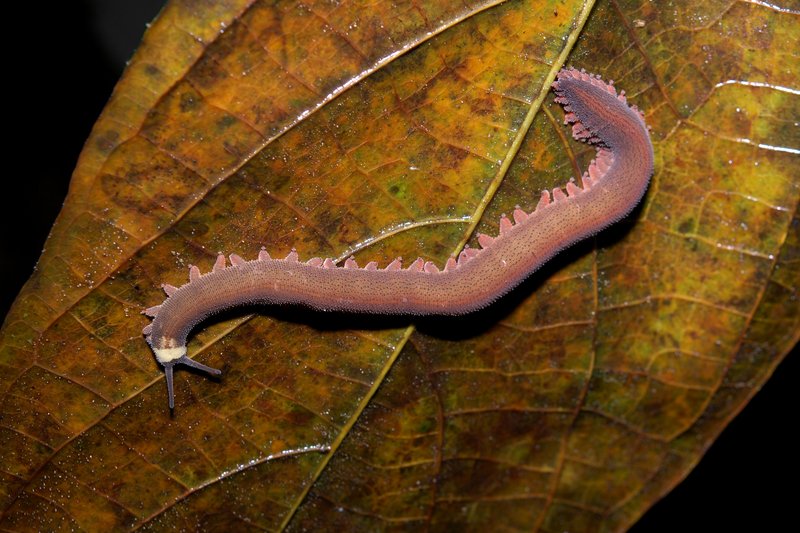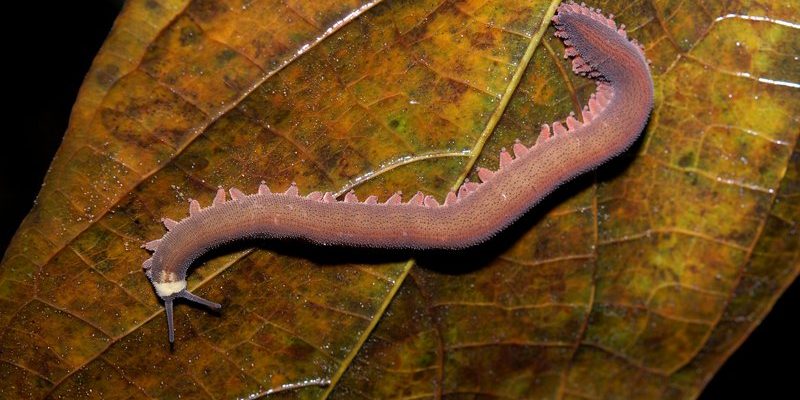
Think of velvet worm slime as nature’s superhero goo. It’s not just about catching prey; it’s also about survival in a world filled with predators. This article will take you on a journey into the world of velvet worms and explore why their slime is so crucial. We’ll break down what makes it special, how it benefits these creatures, and why studying it matters for both science and the environment.
What Are Velvet Worms?
Velvet worms, or *Onychophora*, are fascinating creatures that look like a cross between an insect and a slug. They typically have soft, segmented bodies covered in a velvety texture, hence their name. These critters can be found in damp, tropical climates, hiding under leaves and logs.
While they may look a bit odd, they play an important role in their ecosystem. Velvet worms are carnivorous and primarily feed on soft-bodied invertebrates like worms, insects, and small snails. They have a unique way of hunting. Instead of traditional means, they use their slime to ensnare and immobilize their prey. Imagine a superhero who shoots webbing to catch bad guys—that’s velvet worms for you!
Their habitats are rich in biodiversity, making them essential players in the food web. By preying on various insects, they help maintain population balances. This role highlights just how important velvet worms are for keeping their ecosystems functioning smoothly.
The Production of Velvet Worm Slime
Now, let’s get into the nitty-gritty of how velvet worms produce slime. These amazing creatures have specialized glands in their bodies that secrete a thick, sticky fluid. When they’re ready to hunt, they can shoot this slime up to a meter away! That’s impressive for a little worm.
But the slime’s production isn’t just fancy spraying; it’s a complex process. The glands are made up of cells that produce proteins and other substances. When the worm feels threatened or is about to catch prey, these cells go into overdrive. The result? A long, sticky strand that can immobilize an unsuspecting victim in seconds.
What’s even more interesting is the way this slime can harden upon exposure to air. This means not only does it stick to prey, but it can also provide some protection for the velvet worm itself. So, when you think about it, velvet worm slime is a multi-tasking wonder!
How Velvet Worm Slime Aids Hunting
Hunting isn’t just about speed or strength; it’s about strategy. Velvet worms have employed an ingenious method to snag their meals. The slime they produce is incredibly sticky and strong enough to trap small insects. Once the slime hits the target, it envelops the prey, making escape nearly impossible.
You might wonder why they don’t just chase down their food like other predators. Here’s the thing: this approach is energy-efficient. By shooting slime, they can catch prey without exhausting themselves. This strategy is particularly advantageous in their rainforest habitats, where energy conservation is key to survival.
Moreover, the slime has some unique properties that help in the hunting process. For example, it’s been found to have antimicrobial properties. This means that while it traps their prey, it also helps keep the velvet worm safe from any potential pathogens that could be present on the catch!
The Role of Velvet Worms in Their Ecosystem
Velvet worms might seem small and insignificant, but their ecological impact is significant. They are a part of a larger food web and play a crucial role in controlling insect populations. By preying on various insects, these creatures help prevent any one species from becoming overpopulated, which can lead to ecological imbalance.
Additionally, the slime they produce contributes to the health of their ecosystem. It not only helps in hunting but also serves as a nutrient source when it decomposes. This decomposition supports soil health, which is vital for plant growth. Healthy plants, in turn, support a variety of other organisms, creating a cycle of life.
In this way, velvet worms act as both predators and contributors to their environment. They remind us that every creature, no matter how small, plays a part in the complex tapestry of life.
The Potential of Velvet Worm Slime in Medicine
One of the most exciting aspects of velvet worm slime is its potential applications in medicine. Scientists are fascinated by its unique properties, and research is ongoing to explore its uses. For example, the slime’s antimicrobial properties make it a candidate for developing new antibiotics. With antibiotic resistance on the rise, finding new sources is more important than ever.
Moreover, the slime is also being studied for its potential in wound healing. Its sticky, flexible nature could inspire new treatments for injuries and surgeries. Imagine a bandage that not only sticks well but also helps prevent infections! This could be a game-changer in medical treatment.
The versatility of velvet worm slime is truly remarkable. With ongoing research, we may unlock even more secrets that these ancient creatures hold, paving the way for innovative solutions that could benefit human health.
Conservation and the Future of Velvet Worms
Despite their importance, velvet worms face threats from habitat destruction and climate change. As rainforests are cleared, these creatures lose their homes, which disrupts the delicate balance in their ecosystems. Conservation efforts are essential to protect not only velvet worms but also the biodiversity they help sustain.
You might be wondering what can be done. One effective approach is to promote the conservation of their habitats. By supporting protected areas and sustainable practices, we can help ensure that velvet worms and their slime continue to thrive.
Additionally, public awareness is crucial. Educating others about the value of these creatures and their ecological contributions can lead to increased support for conservation efforts. Who knew that something as simple as a slime-producing worm could be so influential?
In the grand scheme of things, velvet worm slime is more than just a sticky substance. It’s a key part of these creatures’ lives and has far-reaching implications for their ecosystems and even human medicine. From aiding in hunting to potentially revolutionizing medical treatments, the **ecological significance of velvet worm slime** cannot be understated.
With their unique traits and vital roles, velvet worms remind us of the interconnectedness of life on our planet. Protecting them means protecting so much more. So, the next time you think about these peculiar little creatures, remember their remarkable contributions. Their slime is not just goo; it’s a symbol of nature’s ingenuity!

